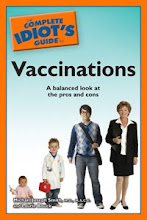Thursday, February 28, 2008
Health Care Reform's Impact on Business
If employers no longer need to purchase private health insurance for employees, they might need to pay into a local, state, or national health care plan fund. If the plan (either government-based or private) is structured and administered well, with a reasonable level of services for patients and reasonable reimbursement rates for providers, it can provide better care at a lower cost than the patchwork of plans currently available. The debate about the cost of such a plan is raging in San Francisco now, though, with the city mandating employers to pay into a fund that would cover uninsured adults. The Golden Gate Restaurant Association fought the plan, claiming the mandated costs are higher than restaurant owners can afford.
If employer-provided health care is decreased or goes away completely, I think that there will be some unintended consequences for large companies in particular. Many people hold on to jobs they don't like at larger employers solely for the access they provide to quality health insurance. If other affordable, high-quality options become available, I think that these employees will leave their employers. Some will move to work in different fields, but others will move to competing companies, or start their own businesses to compete with their former employer.
According to the White House, small businesses are the engine of job creation in this economy, providing two out of every three new jobs, although the nonpartisan National Bureau of Economic Research questions these rosy statistics. Small businesses freed from the burden of taking on large health care costs once they reach a certain size, however, are likely to grow rapidly. As some larger businesses lose employees and smaller businesses gain them, will the revenue gap between the two types of businesses decrease? Will that change ultimately decrease the gap between rich and poor, and shore up the middle class again?
Wednesday, February 13, 2008
ABC, the AAP, and Autism
I've been thinking a lot about the
A small but influential 1998 study suggesting a link between thimerosol and autism was later retracted by its authors, and researchers have since found no link between vaccinations and autism. Furthermore, thimerosol was dropped as a preservative in standard vaccines in the U.S. in 2001.
But what this debate really comes down to is parents’ fear of autism, a fear that is especially acute in the San Francisco Bay Area where I live. A CDC study released in 2007 that looked at autism spectrum disorders in selected regions of the country found an average rate of autism of about 1 in every 150 eight-year-old children. Earlier estimates had suggested autism was much less prevalent, as low as 1 in 500 children. The CDC pointed out that it’s unclear whether the autism rates are increasing over time, or whether it is simply being diagnosed and reported more accurately.
Still, no one knows what causes autism, and a quick glance at the numbers makes it look like an epidemic. When I had my first child, I, too, was told by well-meaning acquaintances that mercury-laden vaccinations might cause autism, one of a long list of things to panic about as a sleep-deprived new Mom. If I had my child vaccinated and she developed autism soon thereafter, would it be my fault if the light in her mind dimmed? Was I willing to take that chance?
By the time my children were born, though, thimerosol had been pulled from the vaccines, and pertussis was making an alarming comeback in
There is a frightening childhood illness for every generation, it seems. At one time it was polio, until Jonas Salk developed an effective vaccine for it in the 1950s. My great aunt had polio as a young woman (luckily she recovered fully). My mother, who grew up in the Bay Area, remembers driving by San Francisco’s Shriner’s Children’s Hospital on 19th Avenue with her family, where many of the young polio patients were dependent on iron lung machines, wondering if that would happen to her. Today, the old Shriner’s Hospital is a retirement community next to a row of modern townhouses, and thanks to the vaccine polio is almost completely eradicated worldwide.



